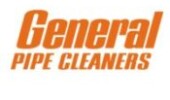
Strategy Matters
February 1, 2014 | By Robert Bean
Our view of construction stands in the way of good buildings.
The exceptions were those from academia and government, and a handful of engineering and architectural professionals. As a result, Canada’s mechanical industry missed out on learning about the key competitive strategies and tactics being implemented internationally in the retrofit and construction of the next generation of buildings.
I think one reason for this failing is the broader market in Canada (and in the United States) views the world of construction from a top down rather than a bottom up perspective (see Figure 1). Domestic and foreign academics are currently influencing international codes, standards and guidelines based on real buildings with real people, not on hypothetical research. This readily available “real” research is being presented worldwide with an underlying message that the ethos of buildings must lay within indoor environmental quality using energy and exergy efficient systems.
That said, within the current engineering and architectural leadership there is broad-based agreement that too much effort continues to be put into energy preservation and conservation at the risk of failing the occupants with the resultant poor indoor environmental quality.
As Danish Technical University professor Bjarne Olesen succinctly stated: “We don’t design buildings for the sake of efficiency, we build them for comfort.”2 No doubt there is a level of frustration from those immersed in the holistic side of architecture having empathy towards energy, while those with a myopic view of energy ignore the human element.3
The frustration is something I witness regularly. It is like observing the wise person on the mountain watching the “lost energy tribe” in the valley below struggling to navigate its way through the forest. The correct path is obvious to those who have a broader perspective from a much higher position. That position is: design for people and good buildings will follow. Those on the mountain are delivering award winning projects such as the Manitoba Hydro Building or NREL RSF Building in Colorado or the recent round of winners in ASHRAE’s Technology Awards. Incidentally, five of the six first place winners used radiant in the HVAC strategy as did a number of second place winners.
For 2014, if there is anything I can bring to HPAC readers from my participation in recent industry conferences it would be these three points:
1. In the global community, Canada is no longer the international darling of building science and energy efficiency. When a worldwide community of building and indoor environmental scientists announces its intention to show up in our backyard we ought to be listening to them and acting upon their works.4
2. Productivity, academic learning and wellness are a product of the indoor environment, and its cost is about 100 times larger than the associated energy cost. Let me put this into perspective. At the recent USGBC GreenBuild 2013 conference it was stated that the United States spends $432 billion on building energy. No doubt that is a big number, but it pales in comparison to the approximately $43.2 trillion related to the human factor cost in those buildings. Divide the numbers by 10 for a figure in Canadian dollars.
3. With today’s building and HVAC technologies, the temperatures needed for conditioning people and spaces is lower than temperatures found on and within the human body itself (100F/38C). It is remarkable that in Canada the majority of our population indirectly or directly uses source temperatures of 3200F (1750C) for cooling and heating buildings.5 We cannot call ourselves sustainable by any definition while blatantly destroying the difference between what we need and what we generate.
As a design practitioner in buildings and mechanical engineering, and as a participant in numerous industry associations and institutes — many of which are populated with academics — I say that we need to turn the way we see knowledge upside down.
It should not be something that gets filtered and diluted down from the top but rather something we build upon to enable the best indoor environments for our population without destroying society’s resources and outdoor
environment. <>




